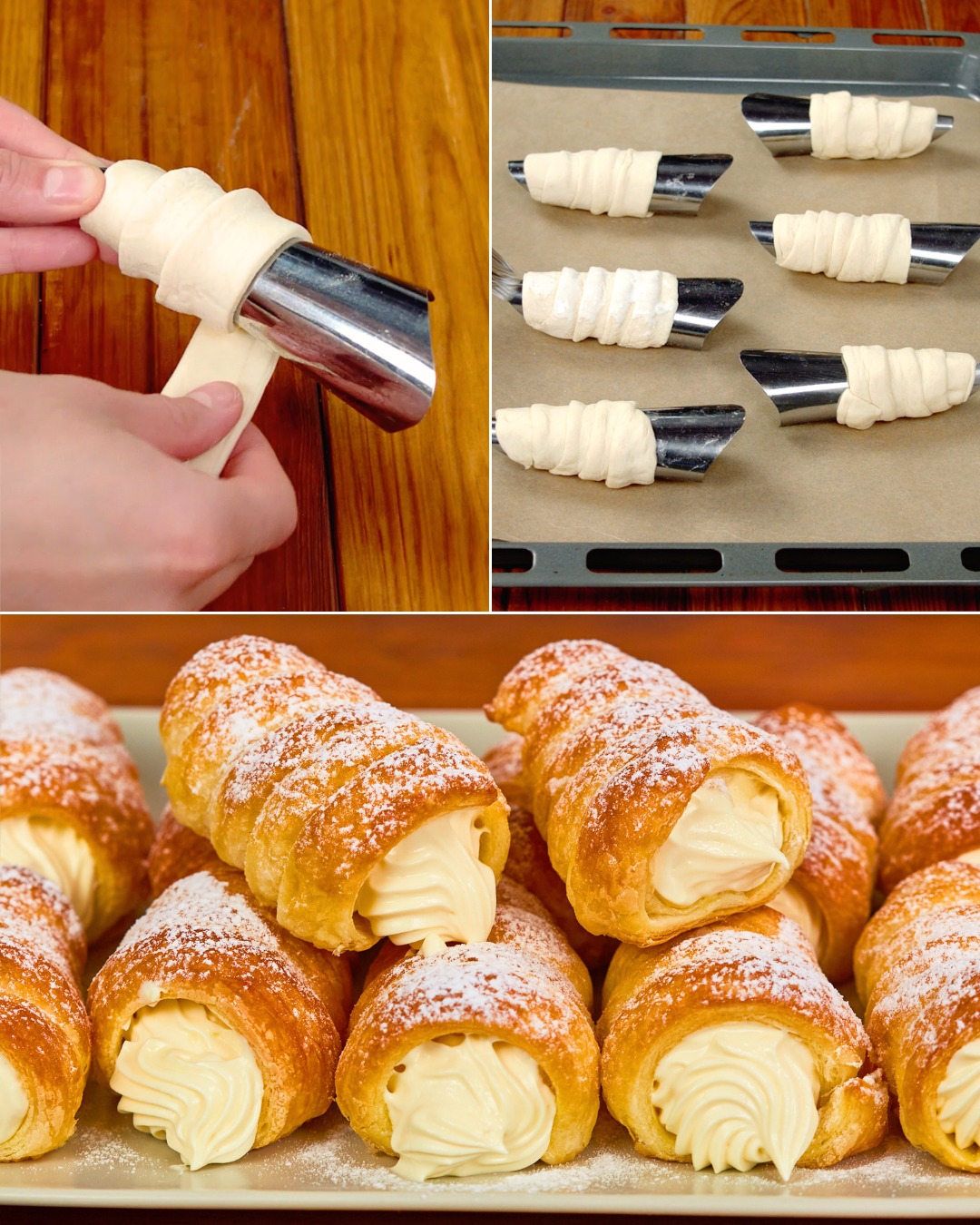Croissants made of puff pastry are a delicious and easy-to-make dessert, filled with diplomatic cream and sprinkled with icing sugar. Lighter than other typical cream croissants (such as Sicilian cannoli), they are crispy on the outside and creamy on the inside, perfect as a dessert at the end of a meal or for a dessert buffet.
To make them, cut a roll of puff pastry into strips, roll each one around a suitable baking tin and bake. In the meantime, add the custard and whipped cream. When the croissants with puff pastry cream are ready, fill them with a pastry bag and decorate with powdered sugar.
Puff Pastry vs. Filo Pastry
Puff pastry and filo pastry are staples in the baking world, each bringing a unique texture and flavor to a variety of dishes, from savory snacks to sweet desserts. While they may seem similar at first glance, especially since both are used for layered baking, there are distinct differences in ingredients, preparation, and culinary applications that set them apart.
Puff pastry is made from flour, water, butter, and salt. The key to its rich, flaky texture is the addition of butter in a process known as lamination. Layers of dough are folded and rolled out repeatedly, and each layer is spread with butter. This laborious process creates thin sheets of dough separated by butter. When cooked, the water in the butter and dough evaporates, puffing up the dough and leaving airy layers. Puff pastry is prized for its buttery flavor and delicate, flaky texture, making it ideal for dishes like panzerotti, tarts, and vol-au-vents.
On the other hand, filo pastry, also called “filo” or “fillo”, is an unleavened dough made from flour, water, and a small amount of oil, sometimes with the addition of vinegar or lemon juice to make it more elastic. . Phyllo is rolled or stretched into very thin sheets, which, unlike puff pastry, do not contain layers of fat in the dough. Instead, cooks brush each sheet with melted butter or oil before stacking them to create layers. The result is a pastry that is crisp and flaky when cooked, with a texture that is slightly more crumbly than puff pastry. Phyllo is commonly used in Middle Eastern and Balkan cuisine, especially in dishes
Here comes the baklava and spanakopita.
Continued on next page

